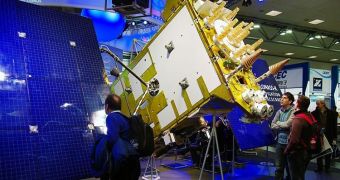At 2015 GMT on Sunday, October 2, the Russian Federal Space Agency (RosCosmos) launch a new GLONASS satellite into orbit. The new spacecraft is meant to patch up the holes left in the country's own satellite navigation (satnav) system by previous lack of maintenance funding.
A modernized Soyuz 2-1b delivery system was used to carry the important satellite in orbit. The spacecraft was carried inside the Fregat upper stage, which performed admirably. This is one of the first Soyuz flights after a mission failure on August 24.
At the time, an unmanned Progress space capsule heading for the International Space Station (ISS) was destroyed when the Soyuz rocket that carried it failed. Since then, all flights have been canceled as RosCosmos was scanning for the source of the error.
Now that everything was reported to be in order, the Russian space agency allowed the GLONASS-M satellite to launch from the Plesetsk Cosmodrome, north of the country's capital. The event occurred around midday, Moscow time.
After the Fregat upper stage separated from the three-stage Soyuz rocket, it fired its engines a total of three times, eventually placing the 3,119-pound (1,414-kilogram) spacecraft in a circular orbit roughly 12,000 miles (19,312 kilometers) above the planet's surface.
The satellite achieved successful separation from the upper stage at around 2347 GMT, which is about the time when mission controllers were able to establish contact with GLONASS-M. The vehicle was behaving within parameters, officials from ISS Reshetnev said.
“The spacecraft launch went off according to plan. Thus far, Glonass M's mechanical subsystems have been deployed. The satellite is Earth-oriented and functioning properly,” reads a statement from the company. ISS Reshetnev is the primary contractor on this mission.
In another press release, this time from the Russian space agency, RosCosmos officials praised the fact that this launch marks the first time the GLONASS satnav network is restored to full operational capabilities since a funding crisis crippled the project in the 1990s.
According to the Russian flight manifest, no less than 4 new GLONASS satellites are scheduled to launch before the year is out, bringing the total number of spacecraft in the navigation system to 28, SpaceflightNow reports.

 14 DAY TRIAL //
14 DAY TRIAL //